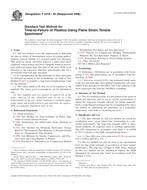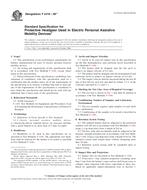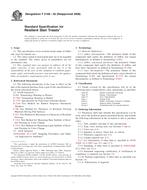1.1 Compositing and subsampling are key links in the chain of sampling and analytical events that must be performed in compliance with project objectives and instructions to ensure that the resulting data are representative. This guide discusses the advantages and appropriate use of composite sampling, field procedures and techniques to mix the composite sample and procedures to collect an unbiased and precise subsample(s) from a larger sample. It discusses the advantages and limitations of using composite samples in designing sampling plans for characterization of wastes (mainly solid) and potentially contaminated media. This guide assumes that an appropriate sampling device is selected to collect an unbiased sample.
1.2 The guide does not address: where samples should be collected (depends on the objectives) (see Guide D6044), selection of sampling equipment, bias introduced by selection of inappropriate sampling equipment, sample collection procedures or collection of a representative specimen from a sample, or statistical interpretation of resultant data and devices designed to dynamically sample process waste streams. It also does not provide sufficient information to statistically design an optimized sampling plan, or determine the number of samples to collect or calculate the optimum number of samples to composite to achieve specified data quality objectives (see Practice D5792). Standard procedures for planning waste sampling activities are addressed in Guide D4687.
1.3 The sample mixing and subsampling procedures described in this guide are considered inappropriate for samples to be analyzed for volatile organic compounds. Volatile organics are typically lost through volatilization during sample collection, handling, shipping and laboratory sample preparation unless specialized procedures are used. The enhanced mixing described in this guide is expected to cause significant losses of volatile constituents. Specialized procedures should be used for compositing samples for determination of volatiles such as combining directly into methanol (see Practice D4547).
1.4 This standard does not purport to address all of the safety concerns, if any, associated with its use. It is the responsibility of the user of this standard to establish appropriate safety and health practices and determine the applicability of regulatory limitations prior to use.
Product Details
- Published:
- 01/01/1996
- Number of Pages:
- 7
- File Size:
- 1 file , 63 KB


